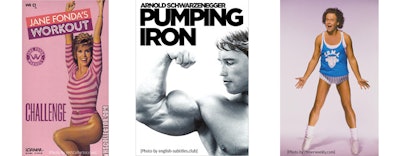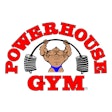
As this issue of Athletic Business looks back over the magazine's first 40 years, I thought I'd take a look back at the fitness industry to see what has come and gone and what has stuck around.
In many ways, 1977 kicked off a fitness revolution that continues today. That year, George Butler released his bodybuilding documentary "Pumping Iron," and the world was introduced to the wonders of free weights and Arnold Schwarzenegger. Suddenly, it seemed, everyone wanted to lift. That was also the year Jim Fixx released The Complete Book of Running, which got Americans moving like never before as it climbed the bestseller list. To this day, running/walking is the most popular fitness activity in the United States.
Franchises and home workouts
In 1983, Bally's Manufacturing purchased some health clubs from Tennis Corporation of America and within a few years was the largest operator of fitness clubs in the country. The modern-day health club culture was born, with Bally's Total Fitness peaking at 440 facilities worldwide by 2007. Today, after selling off most of its facilities and struggling through two bankruptcies, Bally's operates only a few clubs, but other big box clubs such as LA Fitness and Lifetime Fitness now dominate the commercial club market.
The '80s also saw the rise of the home workout video (no, it was not invented by Shaun T or the folks at P90X). Jane Fonda, after writing a fitness book, was approached about making a home exercise video. Released in 1982 as an increasing number of homes claimed VCR ownership, "Jane Fonda's Workout" would eventually sell more than 17 million copies. She released her final video in 2010 — at the age of 72.
This was also the decade in which Richard Simmons released "Sweatin' to the Oldies." Much like Fonda, who encouraged women to exercise to build confidence, Simmons convinced people that exercise was for everyone — no matter if you were out of shape, overweight or had never exercised before. And he made it fun!
Home workouts did not keep club-based group fitness from soaring in popularity in the '80s. Step Aerobics, the mainstay of group fitness studios and health clubs for decades, was developed by Gin Miller in 1989 as an attempt to help her recover from a knee injury. Around this same time, Johnny Goldberg (later known as Johnny G) was popularizing indoor cycling as a group exercise activity in California. It, too, remains a club mainstay.
Infomercials and target markets
In the '90s, the popularity of exercise spawned the quick-fix infomercial product. It was in 1991 that the ThighMaster made its debut. Brought to you by Joshua Reynolds (who also made millions with the mood ring) and his celebrity pitchwoman, Suzanne Somers, the ThighMaster sold six million units in 18 months. We also saw infomercials for the Ab Wheel, 8-Minute Abs, Buns of Steel and the Total Gym, popularized by Chuck Norris and Christie Brinkley. Some concepts made the jump to clubs. Billy Blanks and his Tae Bo home exercise videos led to kickboxing classes in commercial health clubs, and these classes have stood the test of time.
A truly revolutionary health club model emerged in the early '90s, as well. Curves International made its debut in 1992 in Texas as a club designed and marketed specifically for women, but — more importantly — for non-exercisers and overweight individuals. Curves used "regular women" of all shapes and sizes in its marketing, eventually growing to more than 10,000 locations worldwide. Today, the revolution is less robust but still present, with fewer than 6,000 Curves locations and only about 2,500 in North America.
Boxes and studios
In 2000, CrossFit made its debut with a single club and variable workouts that might include heavy squats and running a 5K — all at once. Today, CrossFit claims more than 13,000 locations and, in many ways, has changed people's attitude about working out. Suddenly it was cool to sweat in a barebones warehouse. CrossFit developed its own language: the gym became a box; a WOD is the workout of the day. Participants wanted to brag about how hard they worked out and posted videos of the process.
CrossFit led to the proliferation of the boutique exercise experience. People wanted to feel like they belonged — in small groups, with a "coach." They weren't satisfied with the anonymity of the 4,000-member health club. Group-cycling, yoga and Zumba studios filled the void. All appeal to a consumer's desire to be a part of something smaller and more personal, and larger commercial clubs are now trying to figure out how to bring the "small" feel of a studio into a full-sized fitness facility.
(Un)predictable?
If I were a club owner 40 years ago, could I have seen these changes coming? Most were gradual progressions of things that had been building for years. The rise and fall of Bally's certainly could be considered predictable. Their clubs were always more focused on sales than service (anyone remember the lifetime membership?), and they overextended themselves financially more than once. It was inevitable that other chains would rise up.
The growth of home exercise videos could be viewed as a natural extension of the running craze or the basement set of weights. Some people prefer to exercise on their own. Jane Fonda and a VCR made it easier. The marketing of Curves to the non-exerciser was a great thing for our industry and represented a 180 from other commercial clubs of that era.
What things would I consider impossible to predict? CrossFit came out of nowhere. Asking the average person to do 30 clean-and-jerks and then run a mile as fast as they can? How about teaching an 80-year-old woman to do deadlifts and burpees? No one but Greg Glassman saw this as a viable business plan for the industry. The advent of low-priced clubs was also impossible to predict. What other service industry charges less now than it did in the '70s?
Back in 1977, it would have been impossible to predict that a documentary about bodybuilding and a book about running would kick off a health and fitness craze across this country, and beyond. And while technology is now available to track calories burned, power output and even sleep cycles (introducing the word "wearables" to the fitness lexicon), the most primitive of workouts still work. People have moved a lot of iron over the past 40 years and run a lot of miles. Despite everything else that has come and gone, running and lifting are cornerstones of the vast majority of commercial fitness offerings. The question remains: What will still be here 40 years from now, and what will arrive that we didn't see coming?
This article originally appeared in the April 2017 issue of Athletic Business with the title "Still pumping: How the fitness industry has changed, stayed the same." Athletic Business is a free magazine for professionals in the athletic, fitness and recreation industry. Click here to subscribe.

































